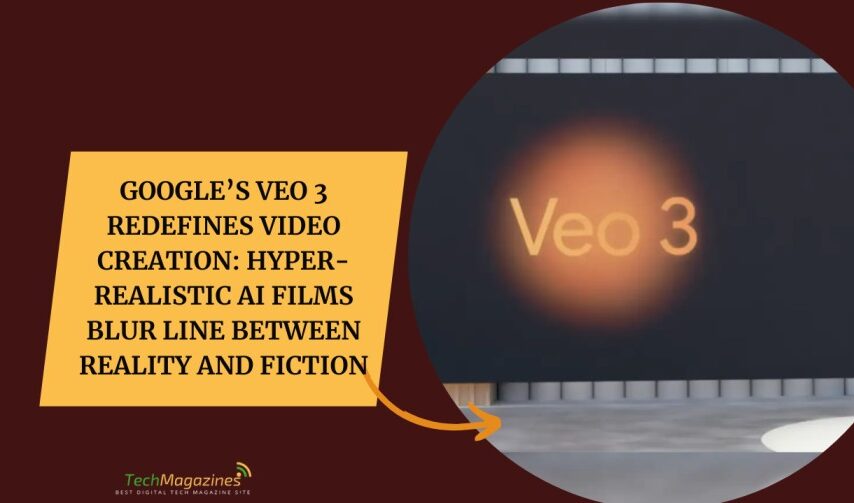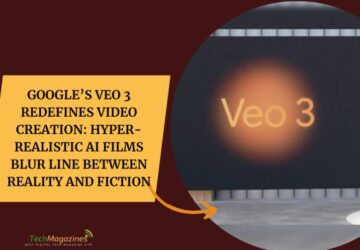Google’s latest artificial intelligence, which they have named Veo 3, produces moving pictures that ordinary people cannot tell apart from those made by flesh-and-blood actors and directors working with cameras and lights. This matters because the videos that Veo 3 creates, when shared across the networks, leave viewers both amazed by what they see and frightened by the thought that truth and falsehood have become impossible to separate.
The larger truth is this: where OpenAI’s picture-maker Sora, which reached the masses last December, works only with images and videos, Google DeepMind’s creation can add human speech, music, and the sounds of the world. The machine follows complicated orders with precision, turning written descriptions into pictures that move as life moves.
Hyper-Realistic AI
The artificial brain respects the laws of nature, matches lip movements to spoken words, keeps its stories straight from beginning to end, and creates human forms that look as humans look—each hand bearing its proper five fingers. From what Google has shown and what users have shared, the usual marks that betray artificial creation have largely vanished.
In one case that spread rapidly across the networks, a man who studies both film and the molecules of life, Hashem Al-Ghaili, displayed short video of artificial actors who spoke bitterly against the machines that had created them and the words that had commanded their existence. The tools for creating illusions, the programs for cutting and joining film, and the machinery of cameras have been reshaping the picture-making industry for generations, but films born entirely from artificial minds present a different kind of threat to those who create with their hands and hearts.
Flow by Google: Creative Freedom or Creative Displacement?
In a demonstration film for Flow, Google’s new video-making instrument that contains Veo 3, filmmakers speak of how the artificial brain grants them fresh liberty, though they hint at something unsettling in its independence. Veo 3 was made known at Google’s gathering on Tuesday and can now be used by those Americans willing to pay $249 each month for Google’s premium artificial intelligence service.
Filmmaker Reactions Split Between Enthusiasm and Alarm
Google claims Veo 3 was shaped by their collaboration with creators and filmmakers and some who make pictures have welcomed these new artificial tools. Yet the spreading of these videos across the networks also fills many workers in film and lovers of creative work with dismay. Some reject all machine-made moving pictures as worthless trash, no matter how skillfully crafted or how closely they mirror life, but what one person calls trash another may call treasure.
AI Content Creation
The instrument might also serve those who sell goods and spread news, writes Ethan Mollick, who studies artificial minds for his living. How Google taught Veo 3 to think remains hidden, and this secrecy may shape what the machine can truly create.
Ethical Issues in AI Learning Patterns
The investigators at 404 Media discovered that when several users asked Veo 3 to make a video of a man telling jokes on stage, it produced the same tired father’s joke for each of them. In the same way, last year the video-maker Marques Brownlee commanded Sora to create a video of a “tech reviewer sitting at a desk..” The machine’s creation showed a false plant nearly identical to the one Brownlee keeps beside him in his own filmed discussions—a sign that the tool had learned by watching his work.
As these perfectly lifelike artificial moving pictures become simpler to make, the world has not yet begun to reckon with questions of who owns what, who must give permission, who holds the rights, and what will become of those who make films for their bread.
Final Words
Because Google’s Veo 3 is making it harder to tell apart real and fake, we now understand “fake it ’til you make it” in a completely different way. The same technology that was supposed to open filmmaking to everyone now seems to be making human creativity as irrelevant as a phone booth in Times Square. While fans of technology are thrilled by Veo 3’s Hollywood-like results from text, the movie industry is unsure if it will be a machine or a human that directs the next blockbuster. The biggest surprise is that… Artificial intelligence is affecting all of us, regardless of whether we wanted to be part of it. The real question may be if audiences will notice the difference.







